Carl E. Olson's Blog, page 206
July 24, 2012
"No social movement gets a special dispensation from history..."
Mary Eberstradt talks with Kathryn Jean Lopez about her book, Adam and Eve After the Pill: Paradoxes of the Sexual Revolution, and the widespread denial of the damage done by the sexual revolution:
For decades now, sociologists and other experts have built up a library’s worth of evidence about the toll of this human experiment. Yet a great many sophisticated people deny that this record exists and excoriate anyone who so much as points his thumb at it. This is uncannily reminiscent of what happened during the Cold War, when an impressive number of sophisticated people across the West reacted to Communism . . . by attacking anti-Communists rather than 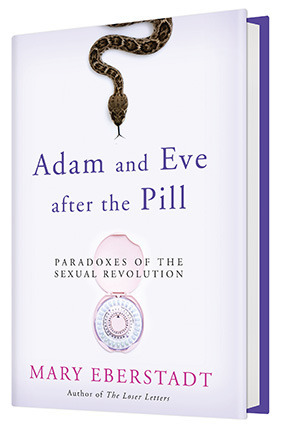 Communists.
Communists.
Of course in retrospect, everyone can see that Communism was exactly what the anti-Communists said it was: an experiment with enormous costs. Nobody disputes that anymore, not even all those anti-anti-Communists who spent their days defending or rationalizing the thing. The point is that as it turned out, a lot of sophisticated people were wrong all along about a pretty important issue that turned out in retrospect to be a no-brainer.
That’s where the comparison to denial about the legacy of the sexual revolution comes in. Right now, those who might be called the “anti-anti-liberationists” are running the show. In retrospect, though, they’ll be the losers in this debate, just like the anti-anti-Communists were yesterday, and for the same reason: because the facts aren’t on their side.
I think that evolution is happening already, in fact. Just look at the recent article in the New York Times, all about how being married or unmarried is a decisive factor not only in income inequality — married people are financially better off — but also, the author dares to suggest, in children’s overall well-being.
That kind of thinking in the paper of record represents a real turnaround. It means that the evidence assembled by Charles Murray and W. Bradford Wilcox and other tenacious social scientists about the “marriage gap” has finally started to sink in. And I’m betting there’s more of that to come as the adverse economic consequences of non-traditional family arrangements get more attention. The connections between the decline of the traditional family and the economic woes of Western welfare states are only beginning to be understood, but they’re obviously there — and again, you don’t need to be a flack for Rome to see them. Just reading a little secular social science will do. ...
LOPEZ: Given the seminal event the introduction of the contraceptive pill was, and the ubiquitous nature of contraception in American lives, is turning back the clock, as they say, realistic?
EBERSTADT: The vehemence with which people say that the clock can never be turned back on the sexual revolution is pretty ironic. Just think of all the times you heard that phrase during the debates over the HHS mandate — or the one about not putting the genie back in the bottle, or not ever returning to the 1950s, etc.
All these clichés are shorthand for one word: inevitability. A lot of people for a lot of reasons want to claim that everything about this revolution is now a permanent fact of life, off-limits for contrarian interpretation. And what’s really interesting about that embrace of the idea of inevitability is that history has shown time and again that human beings just don’t operate that way.
As Karl Popper showed in The Poverty of Historicism, history is not, in fact, on the side of movements claiming inevitability for themselves. Just ask the Communists . . . if you can find any. No social movement gets a special dispensation from history, no matter how badly some people might want it to. Human beings are not only moral creatures but also rational ones, at least collectively and over time, and the empirical record about the dark side of the sexual revolution will eventually make a dent. As mentioned, I think it already has made one.
Read the entire interview, "Pill Buzz Kill" on the NRO site.
National Catholic Register recommends...
... My Brother, the Pope, by Monsignor Georg Ratzinger, as a good book for summer reading:
The vital importance of holy, Catholic family life in helping a young man to discern the call to priesthood and all that may follow from that call, including even becoming the Pope, is at the heart of this book-length interview with Msgr. Georg 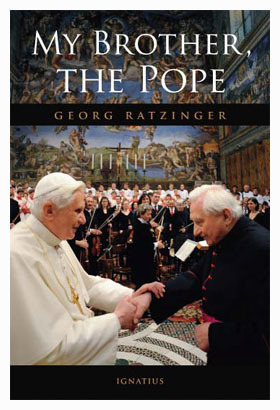 Ratzinger. Midway through the sympathetic interview, conducted by German journalist Michael Hesemann, Pope Benedict XVI’s elder brother cites the Ratzinger family itself as the key ingredient that influenced his and his brother’s decisions to become priests.
Ratzinger. Midway through the sympathetic interview, conducted by German journalist Michael Hesemann, Pope Benedict XVI’s elder brother cites the Ratzinger family itself as the key ingredient that influenced his and his brother’s decisions to become priests.
“It was clear to me from the beginning — although serving at the altar and, of course, perhaps more than anything else, the spirituality of our family had something to do with it — that I would go into ministry.” Young Joseph Ratzinger later followed his brother into the diocesan seminary, and the two have been intimate blood brothers and brothers in the Lord ever since.
Authenticity is at the heart of their lives and spirituality. “As brothers, Joseph and I were one heart and one soul; naturally we also quarreled and fought, that is part of it, but by and large we were inseparable, and that remained so our whole life long,” Msgr. Ratzinger told Hesemann. The reader quickly comes to believe that Pope Benedict would only reinforce and echo the memories of his brother, so close are the two even up to the present day, with Georg living in Germany and his brother at the Vatican, where regular brotherly reunions take place throughout the year. ...
Msgr. Ratzinger, who became a famous choir director in Regensburg, Germany, is known to have an extraordinarily accurate and detailed memory, which shows itself in various colorful descriptions of the homes, towns, churches and schools where the family lived out their Catholic spirituality. The monsignor displays in his depictions just how Bavarian spirituality, like all solid Catholic spirituality, is earthy, grounded in reality, sacramental, beautiful and joyful.
Read the entire piece on the Register's site.
Cardinal Burke: Theologians’ mandatum should be required by colleges
From the "Campus Notes" blog on the Cardinal Newman Society site:
Catholic families have a right to know which theology professors have the mandatum, and Catholic colleges and universities should require it as a condition for employment, affirmed the Vatican’s chief judge Cardinal Raymond Burke in a new report prompted by recent concerns from Pope Benedict XVI.
Cardinal Burke and several bishops, canon law experts, and theologians discussed the mandatum with The Cardinal Newman Society in an online report published today at www.cardinalnewmansociety.org.
The report, titled “A Mandate for Fidelity,” follows upon a May 5th address by Pope Benedict to several American bishops during their ad limina visit to Rome. The Pope expressed concern that “much remains to be done” toward the renewal of Catholic identity in U.S. Catholic colleges and universities, “especially in such areas as compliance with the mandate laid down in Canon 812 for those who teach theological disciplines.”
He cited “the confusion created by instances of apparent dissidence between some representatives of Catholic institutions and the Church’s pastoral leadership.”
Canon 812 of the Catholic Church’s canon law states, “Those who teach theological disciplines in any institutes of higher studies whatsoever must have a mandate from the competent ecclesiastical authority.”
As implemented by the U.S. bishops, a theology professor requests a “mandate” (commonly identified by the Latin mandatum) from the bishop presiding over the diocese where the theologian is employed. The professor commits, in writing, “to teach authentic Catholic doctrine and to refrain from putting forth as Catholic teaching anything contrary to the Church’s Magisterium,” according to U.S. guidelines.
But in the United States, many Catholic colleges and universities have not required theology professors to have the mandatum, or even to disclose to students and their families which professors have the bishop’s recognition. The 1990s saw vigorous opposition to the mandatum by some theologians and the Association of Catholic Colleges and Universities, but the controversy has since cooled down, largely because in practice the mandatum has not had much relevance to students and college leaders.
Now Pope Benedict’s concern about a lack of “compliance” with Canon 812 renews questions about Catholic colleges and universities’ obligations relative to the mandatum. The Cardinal Newman Society asked several experts including Cardinal Burke, archbishop emeritus of St. Louis and prefect of the Supreme Tribunal of the Apostolic Signatura, the Vatican’s highest canon law court, to explain what canon law requires.
Citing Pope Benedict’s description of the mandatum as “a tangible expression of ecclesial communion and solidarity,” Cardinal Burke said:
It’s tangible in the sense that it’s a public declaration, in writing, on the part of the ecclesiastical authority that a theologian is teaching in communion with the Church, and people have a right to know that so that if you, for instance, are at a Catholic university or parents are sending their children to the Catholic university, they know that the professors who are teaching theological disciplines at the university are teaching in communion with the Church. They are assured in that by the public declaration of the diocesan bishop.
“The fact that I teach in accord with the Magisterium is a public factor,” added Cardinal Burke. “That’s not some private, secret thing between myself and the Lord.”
July 23, 2012
Muhammad: Man or Myth?
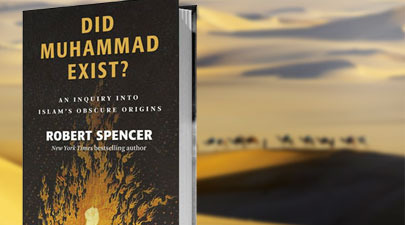
Muhammad: Man or Myth? | J. Mark Nicovich, Ph.D. | Catholic World Report
A review of Robert Spencer's Did Muhammad Exist? An Inquiry into Islam's Obscure Origins.
In recent decades it has become common in certain circles—often academic, sometimes popular—to challenge the historicity of famous figures and seminal events. The most well-known expression of this trend can be seen in those circles, skeptical and sometimes openly atheistic, that have taken the “search for the historical Jesus” to an extreme, calling into question whether a historical Jesus existed at all. The “Jesus Seminar” is a perfect example of this skeptical and even sensationalist approach. The general argumentation of this sort is centered on attacking the early Christian sources, citing the temporal distance of the Gospels and other writings from the early first century and the heavily biased nature of these texts as reasons to doubt the very existence of Jesus and to suspect he was merely a character invented to justify a particular theology, rather than the actual progenitor of it.
The skeptical cacophony has reached enough of a crescendo that Bart Ehrman, a leading New Testament scholar at UNC-Chapel Hill, recently published Did Jesus Exist? The Historical Argument for Jesus of Nazareth (HarperOne, 2012), a defense of the historical existence of Jesus. Ehrman is certainly no fundamentalist—in fact, he has publicly identified himself as an agnostic—and in this new work he is fully aware of the biases and pitfalls inherent in the early Christian sources. Yet despite these obvious issues he still demonstrates the overwhelming evidence for the historicity of Jesus, even if he does portray a rather different figure than the one depicted in the Gospels.
A similar series of works have appeared that attempt to work the same kind of radical historical revisionism on the early history of Islam, focusing on the person of Muhammad and the text of the Qu’ran, including Karl-Heinz Ohlig and Gerd-R Puin’s The Hidden Origins of Islam, Hans Jensen’s Mohammed: Eine Biographie, and an entire body of work by Ibn Warraq. The present work under consideration, Robert Spencer’s Did Muhammad Exist? An Inquiry into Islam’s Obscure Origins (ISI, 2012) is the latest and perhaps most provocative of these books.
New: "The Confessions" (Ignatius Critical Editions)
Now available from Ignatius Press:
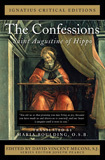 The Confessions: Saint Augustine of Hippo (Ignatius Critical Editions)
The Confessions: Saint Augustine of Hippo (Ignatius Critical Editions)
• Also available in e-book format
The Confessions of Saint Augustine is considered one of the greatest Christian classics of all time. It is an extended poetic, passionate, intimate prayer that Augustine wrote as an autobiography sometime after his conversion, to confess his sins and proclaim God's goodness. Just as his first hearers were captivated by his powerful conversion story, so also have many millions been over the following sixteen centuries. His experience of God speaks to us across time with little need of transpositions.
This acclaimed new translation by Sister Maria Boulding, O.S.B., masterfully captures his experience, and is written in an elegant and flowing style. Her beautiful contemporary translation of the ancient Confessions makes the classic work more accessible to modern readers. Her translation combines the linguistic accuracy demanded by 4th-century Latin with the poetic power aimed at by Augustine, not as discernable in previous translations.
Featuring the following critical and introductory essays:
"The Confessions: Augustine's First Treatise on Grace" – Joseph T. Lienhard, S.J.
"Creation in the Confessions" – Jared Ortiz
"Confession, Prayer, Transformation" – Allan Fitzgerald, O.S.A.
"Augustine's Confessions and the Source of Christian Character" – Christopher J. Thompson
David Vincent Meconi, S.J. situates the reader with the introductory essay.
Sr. Maria Boulding, O.S.B. (1929 - 2009), born in Liverpool, was linguistically gifted and theologically astute. Turning down a full scholarship to Oxford, she joined the cloistered Benedictine Nuns at Stanbrook Abbey in September of 1947 where she unceasingly labored for 62 years. She spent much of her later life translating the writings of St. Augustine.
Fr. David Vincent Meconi, S.J., editor of Homiletic & Pastoral Review, is a professor of patristic theology at St. Louis University where he teaches courses on Trinitarian theology, Christology and soteriology in the early Church, with a special interest in the life and thought of St. Augustine of Hippo. He is also the co-editor of the Cambridge University Companion to Augustine.
Spiritual Direction in the Life of a Priest
Fr. Joseph J. Kelly | Homiletic & Pastoral Review
Good and regular spiritual direction can help us work through some of the natural and dangerous currents in the spiritual life. By trusting God to redirect us and keep us afloat, he will help us navigate back to the solid ground of God’s presence.
Remember the joke about the Exodus? “Why did Moses and the Israelites wander 40 years in the desert?” The answer: “Because men hate to ask for directions!”
As a priest, who has been involved in the ministry of spiritual direction for more than half of my 33 years as a priest, I believe that the joke is on us. Although there are many reasons why priests do not continue in spiritual direction after ordination—i.e., time and availability of spiritual directors, to name a few—I am convinced that seeking out and receiving regular, one-on- one, spiritual direction is a graced relationship, worthy of our time and trust.
I would like to begin with a personal story that can serve as a paradigm of how regular, in-person, spiritual direction can act as a relational life preserver for us who are drawn, here and there, by the demands of contemporary ministry and the challenge of relationships.
Once, while vacationing on an Island in the Atlantic, I was informed that a hurricane was on a direct path toward the island. The next morning, I decided to go to the beach early, taking in some sun and bathing in the ocean, before the storm made landfall. That decision almost cost me my life. I learned, especially, to respect riptides: a strong current, opposing other currents, running parallel to the seashore.
With the sun shining and the waves kicking up, I noticed that surfers were out, so I dove in, unconcerned for my safety, swimming about ten yards off-shore. Suddenly, I was caught up in a riptide, rapidly drawing me toward a large formation of rock jutting out from the shore. Driven by a rush of adrenaline, I panicked and began swimming for the shore with all my strength. But the tide was stronger than I was; the tide had me in its control. The fear of crashing into the rocks was overtaking me, and I prayed: “God help me. Please!” From within came a voice—a memory that I recall to this day as being firm and clear—“Go with the rip.”
I let go. I stopped swimming, letting the tide carry me closer and closer to the rocks. Ten yards from the rock formation, the riptide suddenly let me go. I was free to swim ashore.
There is a current that runs in the spiritual life of a Christian, a current below the surface of human experience which moves the heart like no other. Jesus describes this inner reality of the believer this way:
July 21, 2012
“The Lord is my shepherd; there is nothing I shall want.”
A Scriptural Reflection on the Readings for Sunday, July 22, 2012, the Sixteenth Sunday in Ordinary Time | Carl E. Olson
Readings:
• Jer 23:1-6
• Ps 23:1-3, 3-4, 5, 6
• Eph 2:13-18
• Mk 6:30-34
The Bible refers to many strange and exotic creatures, including dragons, snakes, talking donkeys, and demon-possessed swine. But the most widely discussed and depicted animal in all of Scripture is ordinary, meek, and not altogether bright. Sheep are easily the most-mentioned animals in the Old and New Testaments, with some 400 literal and metaphorical references, in addition to about a hundred references to shepherds.
Along with goats, sheep were essential to the lifestyle—both nomadic and agrarian—of the Hebrews, who relied heavily on the wool, milk, and meat of the sheep. That vital relationship between sheep and shepherd was the basis for figurative language describing a familial and spiritual relationship, sometimes between the people and their leaders, and sometimes between the people and God. The Pentateuch describes God as “the Shepherd” (Gen. 49:24), and expresses the need of the “congregation of the Lord” to have an appointed leader so they “may not be as sheep which have no shepherd” (Num. 27:16-17). There are several references to sheep who have no shepherd or master (1 Kng. 22:17; 2 Chr. 18:16), a theme developed at length by several of the prophets, especially Ezekiel and Jeremiah.
Ezekiel 34 is the longest example of a condemnation of bad shepherds—religious and civil leaders who have failed the people precisely because they have not obeyed the commandments of God. Today’s reading from Jeremiah is another example of a prophetic denunciation of those who “mislead and scatter the flock” of God’s pasture, failing to care for and protect the people.
Jeremiah speaks of a day when God will gather “a remnant” of his flock and appoint shepherds “who will “shepherd them.” This is a prelude to a prophecy about the Messiah—the righteous shoot, or offspring, of David—who will reign, govern, and bring salvation. The rule of the Messiah is a sacred kingship bringing to realization the blessings of the covenant and establishing justice and righteousness. This, of course, is a reference to Jesus Christ, who has, Paul writes in today’s reading from his letter to the Ephesians, reconciled man to God through the Cross and established peace.
This reconciliation through Christ’s flesh, death, and resurrection is concretely realized within the Church. Lumen Gentium, the Second Vatican Council’s dogmatic constitution on the Church, draws deeply from Scripture in describing this truth:
The Church is a sheepfold whose one and indispensable door is Christ. It is a flock of which God Himself foretold He would be the shepherd, and whose sheep, although ruled by human shepherds; are nevertheless continuously led and nourished by Christ Himself, the Good Shepherd and the Prince of the shepherds, who gave His life for the sheep” (par. 6).
Paul explained to readers in Ephesus that Christ came and preached peace so both Jews and Gentiles could have access through him “in one Spirit to the Father.” All men are called to the sheepfold, the household of God, and invited to enter. Some, sadly, will turn away, preferring false freedom over eternal life.
Today’s Gospel depicts the moment between the disciples returning from preaching repentance door to door and the feeding of the five thousand (Mk. 6:35-44). Having invited those who were his disciples to rest a while, Jesus soon thereafter saw the great crowd who were following him, “for they were like sheep without a shepherd.” Here, at last, was a shepherd who truly loves his people!
Each man needs a shepherd, for he is incapable of fulfilling the deepest longings of his soul and heart. As St. Augustine acknowledged in his Confessions, “our heart is restless until it rests in you.” Only the Lord, King David wrote in perhaps his most famous psalm, can lead us by restful waters and refresh our souls. “The Lord is my shepherd; there is nothing I shall want.” The divine shepherd guides us, protects us, and feeds us with his body and blood, soul and divinity. He fills our deepest desire: to dwell in the house of the Lord forever.
(This "Opening the Word" column originally appeared in the July 19, 2009, edition of Our Sunday Visitor newspaper.)
July 20, 2012
Eleven Churches Not to Miss When You Visit Chicago
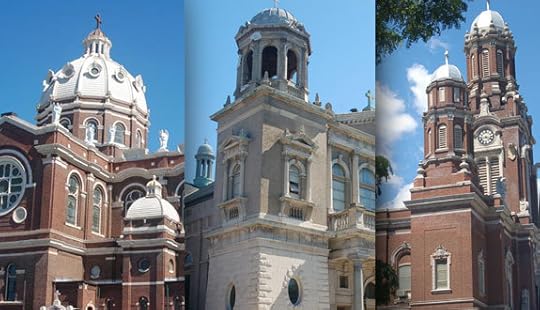
Eleven Churches Not to Miss When You Visit Chicago | Jim Graves | Catholic World Report
In a city shaped by immigrant communities, beautiful historic churches reflect the faith and hard work of generations of Catholics.
Chicago is known for its many beautiful and historically significant buildings, not the least of which are its Catholic churches. In the city there are about 365 Catholic churches, which for nearly two centuries have invited the faithful to come and worship their Creator.
This summer, I took a tour of four of these churches in what were originally Polish neighborhoods with Nell Andrzejewski, director of Catholic Church Tours. She refers to Chicago as “Little Rome” because of its many churches built in the old European style. As various immigrant groups came to the United States, they moved into often modest neighborhoods and built grand churches, which would serve as a hub for their communities. And while the ethnicities of these communities would change over time, their houses of worship would endure.
Since Nell began her touring company two years ago, she said, “I’ve fallen in love with the beauty of the Church.”
Each building has something to teach us about the Faith, she continued, and she sees the structures as “poetry in concrete.”
Here are profiles of these four churches, followed by suggestions from Nell and CWR readers of others that are well worth a visit.
July 19, 2012
Lies, Damned Lies, and a Spirit of Confusion
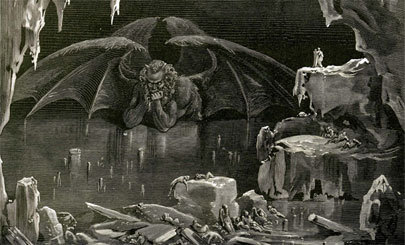
Lies, Damned Lies, and a Spirit of Confusion | Anthony Esolen | Catholic World Report
Today we see linguistic and moral confusion in almost everything said about the subjects that have us most perplexed: man and woman, marriage and children.
“He is a liar and the father of lies,” said Jesus of Satan (John 8:44). They who are committed to holiness must be committed to clarity of intention and speech: “Let your speech be yea, yea: no, no: and that which is over and above these, is of evil” (Matthew 5:37).
The lie is the distinguishing feature of evil, because of its self-devouring commitment to what is not: it is an inner vacuity. Shakespeare’s villain Parolles identifies himself as a “corrupter of words,” and the sardonic Porter in Macbeth remarks wryly upon the liar who equivocates his way down the primrose path to perdition. Orwell’s dystopian regime in 1984 rests upon a ground floor of terror and violence, but its bedrock foundation is the lie: witness the hero Winston Smith’s work at the “Ministry of Truth,” sending precious archival materials down the “memory hole,” where they will be lost forever. It is why Dante situates fraud below violence in the Inferno’s decrepit descent into non-being and idiocy; so we find the giant Nimrod, builder of the heaven-aspiring Tower of Babel, sputtering gibberish, and the consummate liar Satan uttering not a single word, but telling the same old lie again and again with every flap of his bat-like wings, “I rise by my own power.”
The result is, literally, confusion—pouring together, a disorderly mélange, a chaos. I believe, in our day, that we see this linguistic and moral confusion in almost everything that is uttered about the subjects that have us most perplexed: man and woman; marriage and children.
Examples abound. A recent paper in a journal of medical ethics has recommended “after-birth abortion” as a morally sound measure for those parents to take who, once they see their child, determine that they would have killed it in the womb if they had known about its specifics beforehand. I note here that “abortion” itself was already a linguistic dodge, as its early meaning, the morally neutral “miscarriage,” was applied to soften the perception of an intentional killing. Nobody could sensibly say, “I am going to the doctor’s to miscarry,” because the absurdity of the infinitive would be immediately apparent; that is what made the more technical noun handy.
But now our moral pathfinders wish to extend the utility of the initial lie.
Ecology of the Body, NFP, and "Adam and Eve After the Pill"
Judy Barrett, Respect Life coordinator for the Santa Rosa Diocese, reflects on the physical and moral evils of contraception:
It strikes me as a curious disconnect that in this health-conscious environment, millions of women daily pop birth control pills made of artificial hormones, taking the Pill for decades from their teens through menopausal middle age, with hardly a second thought about potential physical, psychological, and societal downsides. Think about it: healthy women take a daily dose of man-made hormones to control a perfectly natural bodily function—fertility—that occurs only a few days each month.
The Pill is deemed to be safe, and modern contraceptives are undoubtedly safer from a medical viewpoint that the early higher dose formulations. But every package of birth control pills comes with a fine-print insert warning of side effects  that may include blood clots, strokes, breast cancer, cervical cancer, depression, weight gain and bleeding and advising that certain people should not take the drugs. If you watch television, you’ve undoubtedly seen commercials urging women who have suffered serious harm from several kinds of contraceptives to join in class action lawsuits against the makers of the drugs. So—how “safe” is safe? Yet, most people take it as a given that the physical side effects and health risks are outweighed by the benefits of the Pill.
that may include blood clots, strokes, breast cancer, cervical cancer, depression, weight gain and bleeding and advising that certain people should not take the drugs. If you watch television, you’ve undoubtedly seen commercials urging women who have suffered serious harm from several kinds of contraceptives to join in class action lawsuits against the makers of the drugs. So—how “safe” is safe? Yet, most people take it as a given that the physical side effects and health risks are outweighed by the benefits of the Pill.
Whether or not the Pill is safe begs some larger questions: Is it morally right?
She then makes the excellent point that the focus on religious liberty should not obsure the truth about contraceptives and the gift of NFP:
But while emphasizing the very real religious liberty threats, I wonder if we Catholics are letting a teaching moment slip by. One of the responsibilities of the Church and the faithful is to bear witness to the truth, to get the message of the Church out into the world. Sometimes we don’t do that as well as we could, either as the institutional Church or as the laity.
Here’s my point: Church teaching on contraception is morally correct, good for individuals, families and society at large, and it needs a fair hearing. One of the best kept secrets of the Church is natural family planning (“NFP”). NFP, properly understood, is the moral, holistic, drug free, natural, healthy, modern and scientific means of cooperating with God’s plan to achieve or postpone pregnancy. Every year the USCCB sets aside the week around the anniversary date of Humanae Vitae as Natural Family Planning Awareness Week. The website is a gold mine of information for individuals and parishes.
During NFP Awareness Week beginning July 22 we would do well to ponder and talk about serious questions that deserve to be examined in light of our faith. What are the consequences to individuals and society from the widespread use of birth control? What is the negative fallout of severing procreation from sexual activity? I suggest as a starting point a careful reading of Humanae Vitae. The writings of Professor Janet Smith are noteworthy. For an eye-opening look at the broader societal impact, I recommend Adam and Eve after the Pill: Paradoxes of the Sexual Revolution, the recently published book by Hoover Institution research fellow Mary Eberstadt.
Eberstadt's book has been receiving a large number of positive reveiws. The Weekly Standard recently reviewed Adam and Eve After the Pill: Paradoxes of the Sexual Revolution at length. Jonathan V. Last writes:
The scope of her work is depressingly grand, yet Eberstadt retains a winsome equanimity. She believes that the tide might yet recede, so long as we’re willing to face facts. And she believes—in another parallel she draws with the Cold War—that the right side need not be the losing side. As evidence, Eberstadt offers the amazing case of America’s double-reverse on pedophilia. It’s difficult to remember, but from the 1970s until the 1990s there was a sustained effort to legitimize pedophilia as merely another lifestyle choice. (Eberstadt coined the term “Pedophilia Chic” in these pages.) It nearly succeeded. But during the last 10 years something remarkable happened: As the near-universal condemnation of Roman Polanski showed in 2009, pedophilia was restigmatized.
Eberstadt suggests that this reversal was largely the byproduct of another scandal—the Roman Catholic church’s legacy of priestly abuse. The crimes committed within the church were irresistible to the church’s critics, many of whom were part of the sexual avant-garde and disliked the church specifically because of its teachings on sex. Empowering these critics, Eberstadt wryly notes, “logically created a whole new class of antipederasts.”
Read the entire review. Nancy Piccion, in her recent review on the Reading Catholic site, says:
This book is not enjoyable –in fact, reading it can be downright discouraging. But it is a must-read in understanding, “the moral core of the sexual revolution (is) the abundant evidence that its fruits have been rottenest for women and children.”
Every single essay-chapter is important and stands alone. It’s hard to pick out a best chapter, but “The Will to Disbelieve” is crucial in setting up the notion that society at large is largely ignoring the clear results of the sexual revolution, much the same way the “the moral facts about the Cord War remained disputed at the highest intellectual levels, especially on American campuses, until about two seconds before the Berlin Wall came down.”
Perhaps the only hopeful chapter of Adam and Eve After the Pill is “‘Pedophia Chic’ Then and Now” which outlines how just a few short decades ago, pedophilia was more in vogue and even defended in the public square such as mainstream magazine articles. Ebertstadt writes that it is “a small case of small but real moral progress that bodes a little better for the youngest and most innocent among us, even as it confirms that the sexual revolution has made the world a more dangerous place for them.”
One of the most interesting reviews appeared in Christianity Today, the flagship magazine of American Evangelicalism. The reviewer, Sharon Hodde Miller, is a doctoral student at Trinity Evangelical Divinity School; she states:
Eberstadt's final chapter sheds a different kind of light on current evangelical conversations about sex. As often as these discussions are taking place, and as important as it is to affirm sex in marriage, there is a distinctly individualistic flavor to these teachings. While church leaders should encourage marital intimacy in the bedroom, married sex (and the teachings behind it) can still have negative social ramifications. Using contraception is not a private act, nor is it a neutral one. Eberstadt's book is Exhibit A of this reality.
Knowing this, pastors cannot address the widespread sexual brokenness in our culture simply by encouraging married sex. They must also address the ideology and theology behind the brokenness, and contraception is Ground Zero for those discussions.
Although Eberstadt's primary aim is to present the empirical evidence of the sexual revolution's fallout, her research serves an additional purpose. It also presents the empirical evidence for thinking carefully and soberly about embracing contraception. In this day and age, such a suggestion will seem ridiculous to Christians and non-Christians alike, but the data is undeniable. If we want to think seriously and Christianly about sex, then we need to think seriously about contraception.
For more information:
• Visit the website for Adam and Eve after the Pill
• Read the Introduction to Adam and Eve after the Pill
• "The Party's Over": A Catholic World Report interview with Mary Eberstadt
Carl E. Olson's Blog
- Carl E. Olson's profile
- 20 followers



